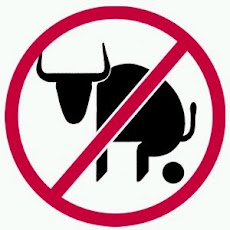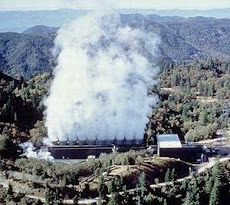Grazing Fees and Rangeland Management
Click on title above to go to website with clickable links to other related informational sites;
*Redistributed as a Service of the National Library for the Environment*
By
Betsy Cody
Environment and Natural Resources Policy Division
Pamela Baldwin
American Law Division
December 4, 1998
CONTENTS
SUMMARY
MOST RECENT DEVELOPMENTS
BACKGROUND AND ANALYSIS
The Setting
Historical Overview
The Administration's "Rangeland Reform" Proposal
Current Issues
Range Condition, or "Rangeland Health"
Public Participation
Grazing Fees
Pricing Mechanisms
Cost Recovery
Regional Socio-Economic Concerns
Permit Value: The Heart of Financial Concerns
Other Socio-Economic Concerns
Legislative Activity
Litigation
LEGISLATION
CONGRESSIONAL HEARINGS, REPORTS, AND DOCUMENTS
FOR ADDITIONAL READING
SUMMARY
The Bureau of Land Management (BLM, Department of the Interior) and the Forest Service (Department of Agriculture) manage approximately 70% of the 650 million acres of land owned by the federal government and many of these lands are classified as rangeland. Both agencies have well-established programs permitting private livestock grazing. The Administration issued new, controversial BLM rangeland management rules effective in August 1995. Supporters contended that the Administration's new rules were a step forward in sound resource management, but some believed they did not go far enough to protect rangelands and riparian areas. Many in the ranching community opposed the new rules, believing that they would ultimately reduce private livestock activity on federal lands, and increase operating costs.
Efforts were made in the 104th Congress and the 105th Congress to override the new regulations. The House during the 105th Congress passed a scaled-back version of a grazing bill (H.R. 2493) reported from the House Agriculture and the House Resources Committees. The House-passed version of H.R. 2493 eliminated several controversial provisions, including definitions on allotments and base property. Some felt these definitions might be construed to create property rights in federal range permits. The provisions on access across private lands, and those on
resource advisory councils, also were dropped, together with most of the provisions on subleasing. Provisions addressing compliance of grazing agreements with applicable laws and charging higher grazing fees to foreign individuals or corporations were added. The bill also directed consistent and coordinated grazing management by the Forest Service and BLM (except for the National Grasslands), established a new grazing fee formula, and addressed monitoring. The bill passed the House October 30, 1997, by a vote of 242-182. The Senate Energy and Natural Resources Committee reported H.R. 2493 without amendment on July 29, 1998. There was no further Senate action.
Several court rulings have also addressed federal grazing management. On June 12, 1996, a federal district court struck down several of the new BLM regulations and upheld others. The court affirmed in part the Secretary's decision to implement the 1995 regulations and reversed it in part, enjoining the Secretary from enforcing the regulations the court set aside. On appeal, the 10th Circuit upheld the regulations on title to range improvements and on grazing preferences, but struck down the regulation allowing conservation use over the full term of a permit. Other cases have addressed the issuance of grazing permits or leases where grazing activities may conflict with state water quality standards or protection of endangered species. The impact from these cases is less clear.
MOST RECENT DEVELOPMENTS
The Forage Improvement Act of 1997 (H.R. 2493) passed the House on October 30, 1997. The bill would have required more consistent management of Forest Service and BLM rangelands (except National Grasslands), established a new federal grazing fee, and altered rangeland management procedures in a few other respects. H.R. 2493 followed attempts in the 104th Congress to override controversial rangeland regulations put into effect by the Clinton Administration in August of 1995. The Senate Energy and Natural Resources Committee reported the bill without amendment on July 29, 1998. Their was no further Senate action. In a related development, a provision within the Omnibus Consolidated and Emergency Supplemental Appropriations Act for FY1999 directs the Bureau of Land Management (BLM) to renew expiring grazing permits on the same terms and conditions as contained in existing permits. The permits are to be renewed until the agency completes all relevant legal reviews, including those under the National Environmental Policy Act.
In June of 1996, a federal district court struck down several of the new regulations and upheld others. The court enjoined the Secretary from enforcing the regulations it set aside. On appeal, the 10th Circuit upheld the regulations on title to range improvements and on grazing preferences, but struck down the regulation allowing conservation use over the full term of a permit. Another recent case has ruled that federal grazing permittees do not need to obtain state certification under Section 401 of the Clean Water Act.
BACKGROUND AND ANALYSIS
The Setting
The federal government owns and manages approximately 650 million acres of land in the United States, 28% of the total land area. Four agencies manage 96% of the federal landholdings for conservation, preservation, and/or development of natural resources: the Forest Service in the Department of Agriculture, and the Bureau of Land Management (BLM), the Fish and Wildlife Service, and the National Park Service in the Department of the Interior. The majority of these lands are in the West, a result of early treaties and land settlement patterns. Early in its history, the federal government owned as much as 80% of the total land area, but has disposed of more than 1.1 billion acres to states and to the private sector. (See CRS Report 95-599 ENR, Major Federal Land Management Agencies: Management of Our Nation's Lands and Resources.)
The BLM and the Forest Service manage approximately 70% of the federal lands; more than half (259 million acres) of these lands are classified as rangelands. The BLM generally manages lands that were obtained by the federal government from sovereign nations through purchase, treaty, or other means, and which, for a variety of reasons, have been retained in federal ownership. These lands are known as "public domain" lands. The Forest Service manages numerous national forests, most of which are "reservations" from the public domain lands, together with other acquired lands, for a variety of purposes. Both agencies have well-established programs to administer private livestock grazing on agency lands. Grazing is also allowed in some National Park System and National Wildlife Refuge System units; however, grazing on these lands is minor compared with grazing on the BLM lands (164 million acres) and National Forest System lands (95 million). This issue brief covers legislation related only to the BLM and Forest Service rangeland regulations and management.
Historical Overview
The debate over rangeland management today involves fundamental questions (and differing opinions) about how best to manage federal rangelands and how to allocate their use among competing interests. The debate over management of the federal rangelands has a long history, pertinent to current management. For example, Western ranchers and livestock operators grazed their private livestock on federal lands since the earliest days of westward expansion (initially without the express consent or control of the federal government). In many areas, cattle operations preceded domestic settlements, and by the mid-1880s disputes broke out among established operations, new settlers, and others accustomed to the free and relatively unlimited access to the public rangelands.
In response to deteriorating range conditions within national forests, the Forest Service established a leasing policy for its rangelands, which eventually led to the first federal grazing fee in 1906. While the Forest Service lands were being managed to restore rangeland conditions and fees were charged for rangeland use, the remaining public domain lands -- those lands remaining in federal ownership that had not otherwise been reserved or removed from entry for specific purposes (such as parks and refuges) -- were open for use without regulation and free of charge until passage of the Taylor Grazing Act (TGA) in 1934 (43 U.S.C. § 315, et seq.).
Deteriorating range conditions on the public domain lands, and continued parceling of large rangeland tracts for homesteads, led livestock interests, conservationists, and others to review the management and disposition of public domain rangelands, and culminated with passage of the TGA. The TGA resulted in a new agency, the Grazing Service, which began to administer a grazing fee and permit program for lands within newly established grazing districts (Section 3 lands), and a lease system for public lands outside grazing districts (Section 15 lands). The Grazing Service and the General Land Office (established in 1812 to oversee disposal of the federal lands) were merged in 1946, resulting in a new agency: the Bureau of Land Management. Additionally, both the Forest Service and the BLM manage significant amounts of land acquired by the federal government under the Bankhead-Jones Farm Tenant Act.
While federal law explicitly allows grazing on certain federal lands (see also the Bankhead-Jones Farm Tenant Act (P.L. 75-637; 50 Stat. 522), the Granger-Thye Act (P.L. 81-478; 64 Stat. 82), the Multiple-Use Sustained-Yield Act of 1960 (P.L. 86-517; 74 Stat. 215), the Federal Land Policy and Management Act of 1976 (P.L. 94-579; 90 Stat. 2743), and the Public Rangelands Improvement Act of 1978 (P.L. 95-514; 92 Stat. 1806)), many have complained in recent decades about the effect of private livestock grazing on the ecological condition of the range and associated resources (e.g., waterways and riparian areas), and on other uses also sanctioned for federal lands, such as recreation, scenic enjoyment, and fish and wildlife habitat.
The Administration's "Rangeland Reform" Proposal
On August 9, 1993, Secretary of the Interior Bruce Babbitt announced "Rangeland Reform '94" -- proposed rangeland rules, including a proposal to more than double grazing fees over three years and to substantially modify federal rangeland policy. The new rules for the BLM lands proved to be very controversial; after several revisions, they were published as final rules in February, 1995 (Federal Register, pp. 9894-9971, February 22, 1995). Most of these rules went into effect August 21, 1995; however, they do not include a change in the grazing fee. Among the most controversial aspects of the Administration's new rangeland rules are provisions related to increased public participation in rangeland management decisions, a focus on ecosystem health and protection, and potential reductions in the number of livestock allowed to graze.
The Administration's new rules are the current focus of a decades-long battle over the ownership, management, and use of federal rangelands. Debate during the 1980s and early 1990s largely focused on the appropriate fee for the use of federal rangelands and the effects of domestic livestock grazing on ecologically sensitive lands. Earlier discussions centered on the basic questions of who should own federal rangelands, how they should be managed, and by whom. While Congress declared that the federal government would retain ownership of its public domain lands in the Federal Land Policy and Management Act of 1976 (FLPMA; 43 U.S.C. §1701 et seq.), management and control issues persist. (See CRS Report 95-345 ENR, Federal Land Sales: Possible Revenues.)
Debate in the 105th Congress focused on changes in the grazing fee formula, proposed changes in grazing regulation definitions, the make up and role of Resource Advisory Boards, public participation and access, and subleasing.
.........
CRS Reports Home
National Council for Science and the Environment
1725 K Street, Suite 212 - Washington, DC 20006
202-530-5810 - info@NCSEonline.org
http://ncseonline.org/NLE/CRSreports/agriculture/ag-17.cfm#MOST%20RECENT%20DEVELOPMENTS
Saturday, August 1, 2009
Subscribe to:
Post Comments (Atom)



















No comments:
Post a Comment